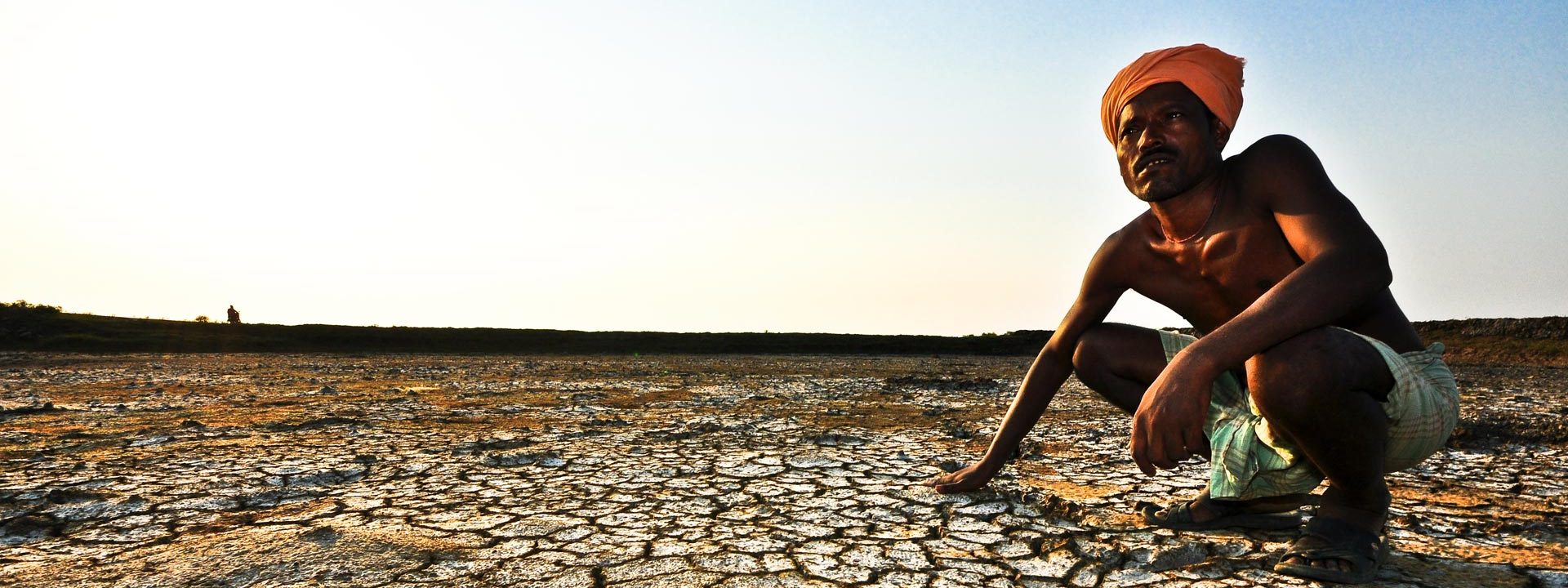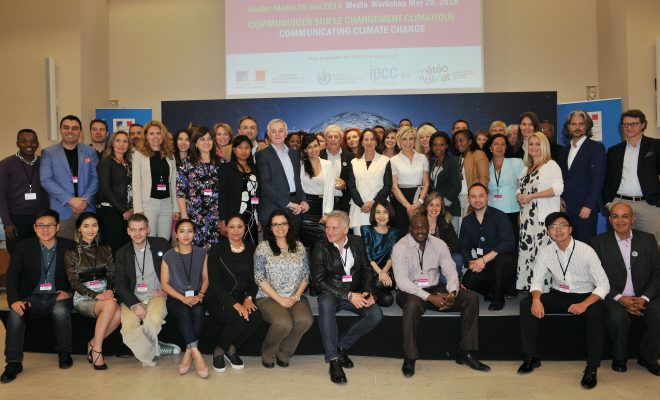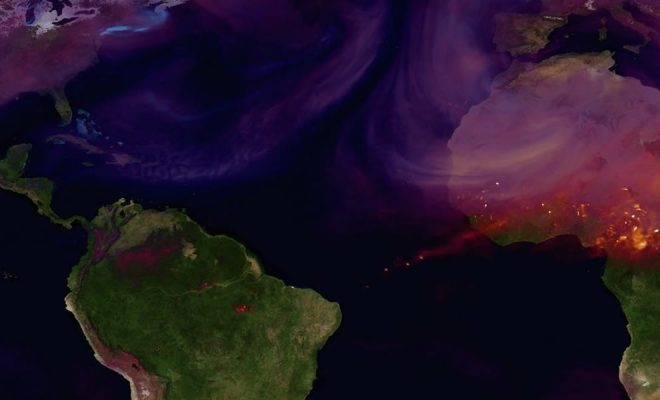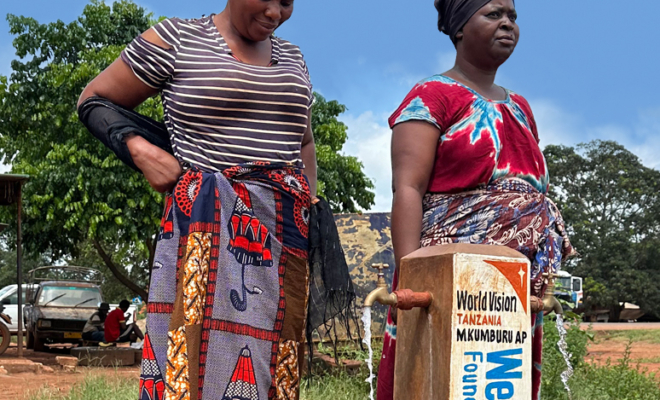The World Day to Combat Desertification and Drought alerts us to a phenomenon that spreads out from North to South.
Several projects of the We Are Water Foundation, such as the construction of a reservoir in Ganjikunta, show the good practices to fight a process that threatens the access to water and the food safety of millions of people.
It is necessary to distinguish between desertification and desertization. Up to the decade of 1970 both terms were practically synonymous, but it was at the United Nations Convention to Combat Desertification (UNCCD), in 1977, where the term desertification was defined precisely: “a degradation process of fertile soil in arid, semiarid and sub-humid areas due to different factors, such as climatic variations and human activities.” This concept distinguishes desertification from desertization, which is the natural process that has created the deserts (e.g. the Sahara or Gobi desert).
Although some scientific movements hesitate to distinguish so radically between desertification and desertization, the most significant term is “human activities”, this being what involves all of us in this problem. In 1994, there was such evidence of the advance of desertification that the United Nations Organization declared the 17th June as the World Day to Combat Desertification and Drought with the aim of raising global awareness of the disaster that spreads along with the melting of the poles and glaciers. The global warming of the atmosphere, caused doubtlessly by our actions, is the main cause, but there are also some bad practices we need to abandon.
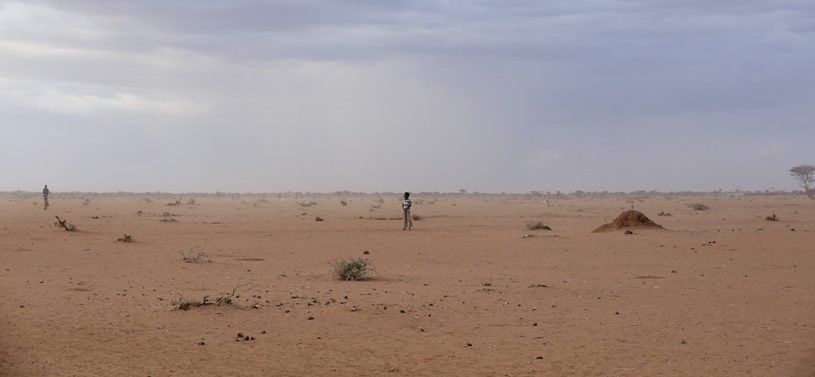
Dadaab, Kenya ©UN Photo/Evan Schneider
This lack of fertility of the soil is the result of the destruction of the topsoil, of erosion and the lack of water. Apart from climate change, which can be considered also the result of human activity, this deterioration of the “living soil” is generally due to intensive farming, overgrazing or deforestation. In some of these areas climate change also causes an increase of torrential rains that worsen the problem as they erode the earth provoking a vicious circle: the soil progressively loses its capacity to retain rainwater and to filter it towards the aquifers, and therefore the area becomes increasingly dry.
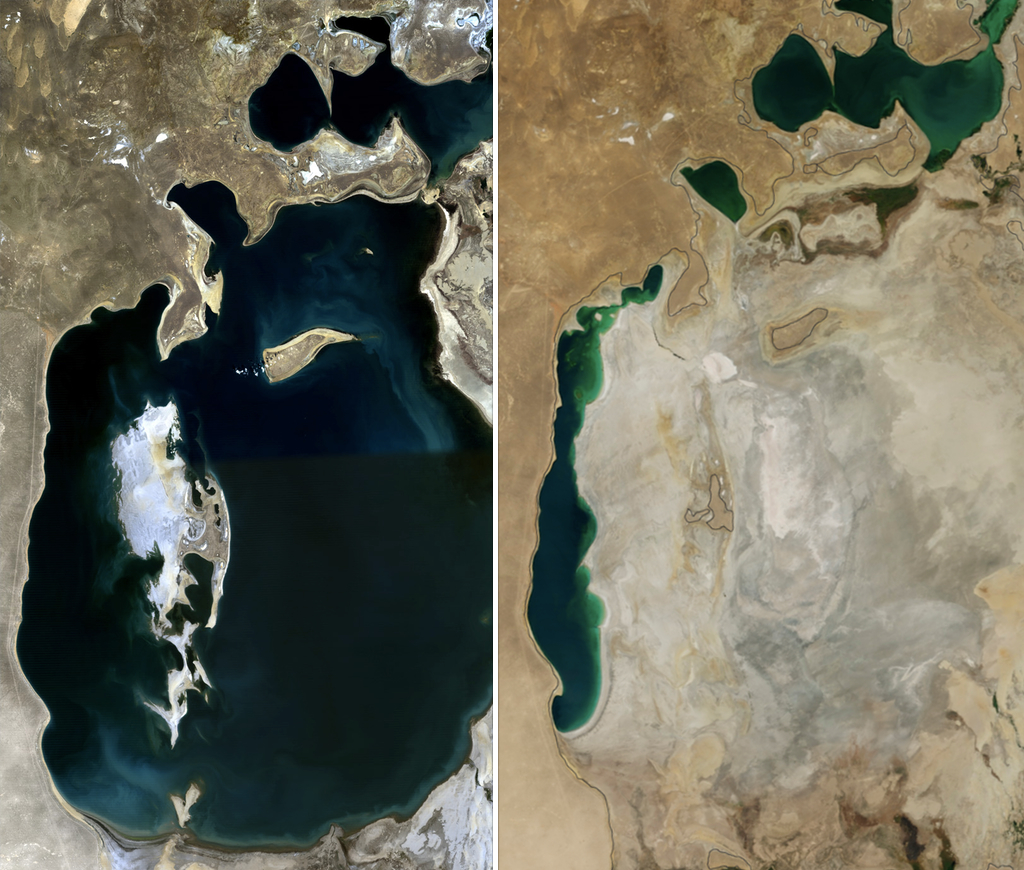
Satellite photo of the Aral sea. Left, in 1989, right, in 2014. © NASA. Collage by Producercunningham
In some cases, the bad management of water resources has caused the deterioration of large soil areas combined with the pollution of groundwater, which doubtlessly worsens the problem. One of the most shocking examples of these bad practices is the disappearance of the Aral sea, whose consequences in the ecosystem and the lives of people was perfectly portrayed in the documentary Aral, the lost sea, filmed byIsabel Coixet for the We Are Water Foundation.
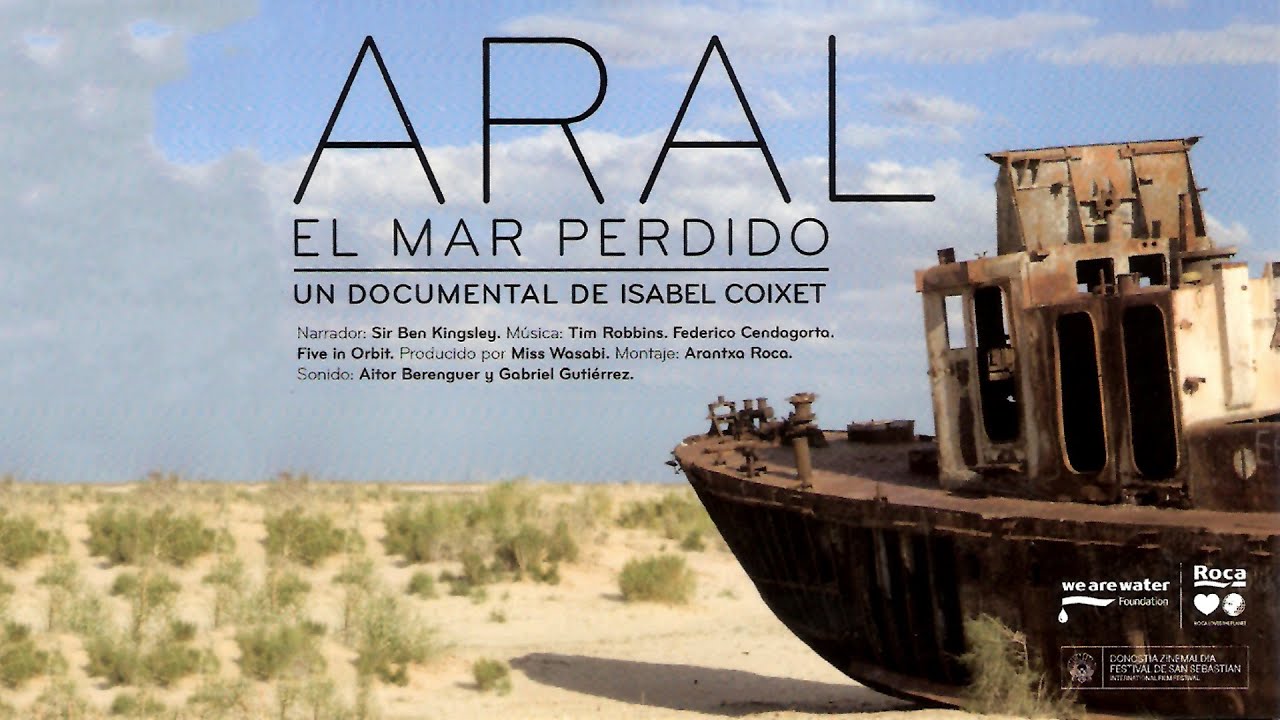
The drawn menace
We can see the magnitude of the menace shown in colour code in the following map of the U.S. Department of Agriculture.
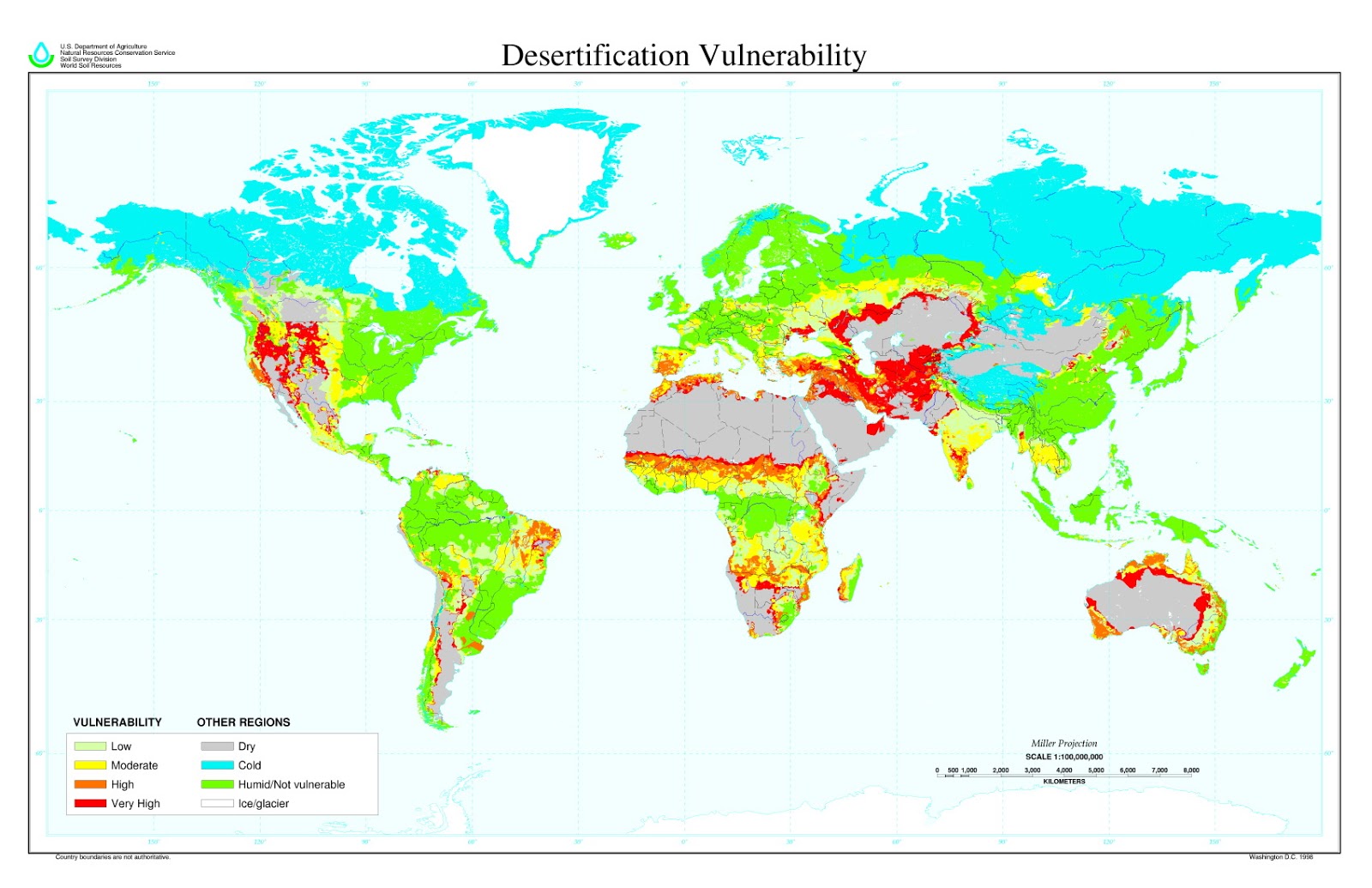
Vulnerability to desertification. © US Department of Agriculture
In red, the areas with the highest vulnerability that enclose the existing deserts, in grey colour. Most of the orange areas, categorised as high vulnerability ones, are adjacent to the red areas; this has a special significance south of the Sahel strip (mainly in red) and in vast areas of the Middle East. In Africa, two thirds of the soil is deserts or arid zones; in Asia there are 1.7 billion hectares of arid, semiarid or dry sub-humid soil. And in Central and South America, one quarter of the soil is a desert or an arid zone. According to the figures of the United Nations Environment Programme (UNEP), in 2010 35 % of the surface of the continents could be considered as desert areas.
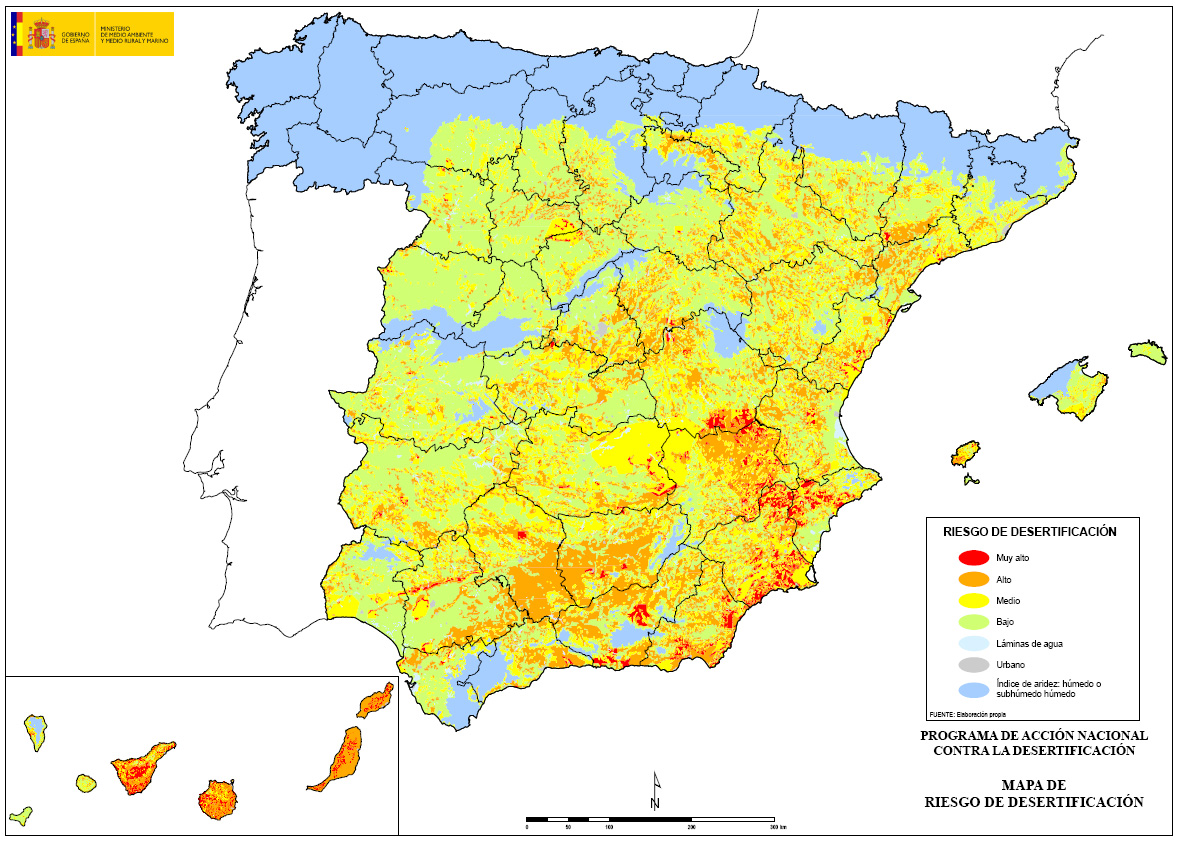
Risk of desertification in Spain. © Ministry of Agriculture, Food and Environment
The menace at home
In this map it is possible to see the Iberian Peninsula stained with red and orange dots. This can also be seen in the North African and Middle East coast, along with some areas of Greece, Sicily and the south of Italy. In the following map of the Spanish Ministry of Agriculture, Food and Environmentwe can see the endangered areas in detail.
We can see that the so called Spanish Mediterranean Arch concentrates the areas with greater risk; in some cases there is already a slow deterioration process, with important areas in the Southeast and South. In these areas there is the already mentioned climate aggravation, as it rains very little and when it does, it is seasonal rain and very frequently comes as violent downpours.
Desertification may be slowed down
It is easy to understand that the elimination of our bad practices is the key factor to fight desertification. The Goal 15 of the Sustainable Development Goals (SDGs) addresses this serious threat directly. It is essential to pursuit a sustainable agricultural and livestock development. To that effect, in many occasions it is only necessary to resort to traditional practices that have been abandoned due to demographic pressure and very often to a political mismanagement that has allowed the imposition of single-crop cultivation, altering the ecological balance. Reforestation is also essential as it is linked to the retention of the “living” layer of the earth and the recovery of the aquifers.
A project that summarises and shows these actions clearly is the one finished by the We Are Water Foundation in 2011 in Anantapur, the largest district of the 22 that make up the Indian state of Andhra Pradesh, together with the Vicente Ferrer Foundation: the construction of a reservoir in Ganjikunta. There, in an area threatened by desertification and subject to the climatic whim of the monsoons, the catchment of rainwater by means of small reservoirs allows farmers to diversify their crops, guaranteeing water in the long drought seasons and recovering the aquifers by filtration, thus providing water to the wells in the area and improving reforestation.
Another project of the Foundation that shows how to find solutions in communities threatened by the deterioration of fertile soil is the recovery of the natural water cycle in the Bosawas Reserve, in Nicaragua. Education is one of the key work areas for the recovery of traditional agricultural and livestock techniques, in order to achieve the sustainability of the economic activity. There, together with Educación Sin Fronteras , the Foundation developed and implemented an educational programme for the mayangna indigenous community with the aim of slowing down deforestation and promoting the intercultural relationship and the gender rights.
It is possible to fight desertization, although it is not an easy task. May the threat of its nearness raise our awareness so that we support the initiatives that fight it!


